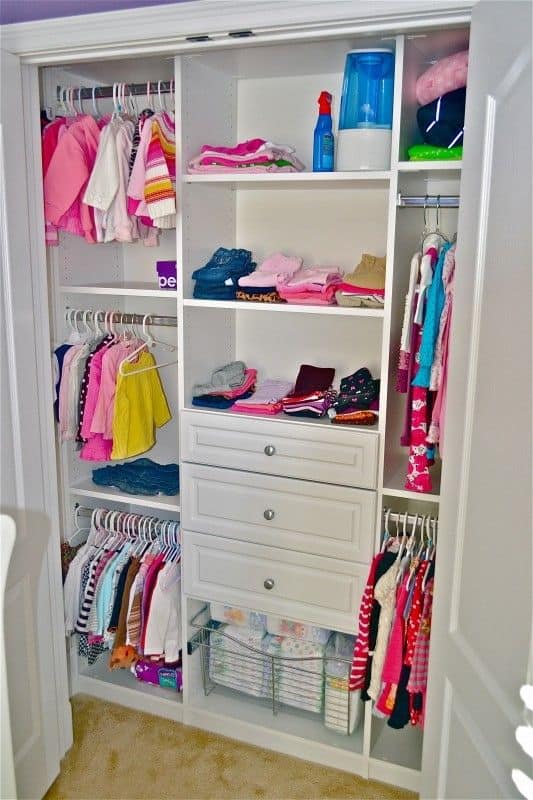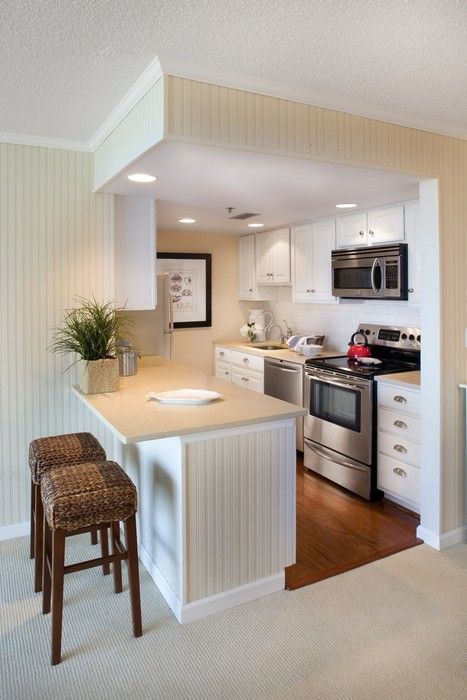If your child’s closet looks like a tornado just passed through, you’re not alone. The good news?
You don’t need to renovate or spend hundreds on custom solutions. With a few clever, realistic, and kid-friendly organizing ideas, you can turn a messy closet into a functional, easy-to-maintain space your child can actually use.
These 21+ ideas work whether you’re organizing a baby nursery closet, a kindergartener’s growing wardrobe, or a tween with opinions and hobbies.
Let’s dive into what actually works—and why.
1. Double Hanging Rods = Twice the Space
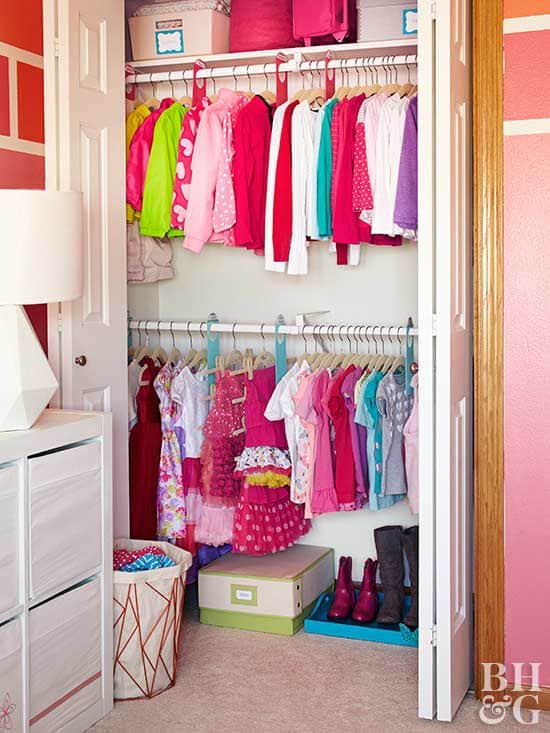
Most children’s clothes are shorter than adult items. That means you’re likely wasting valuable vertical space in their closet. Installing a second rod underneath the top one instantly doubles your hanging space.
Why it works:
- Toddlers and school-aged kids don’t need long hanging space.
- You can separate outfits by type (tops above, bottoms below) or by season.
- As kids grow, you can remove the lower rod and add shelving instead.
✅ Pro tip: Use tension rods for a no-drill, flexible solution.
2. Labeled Bins for Self-Service
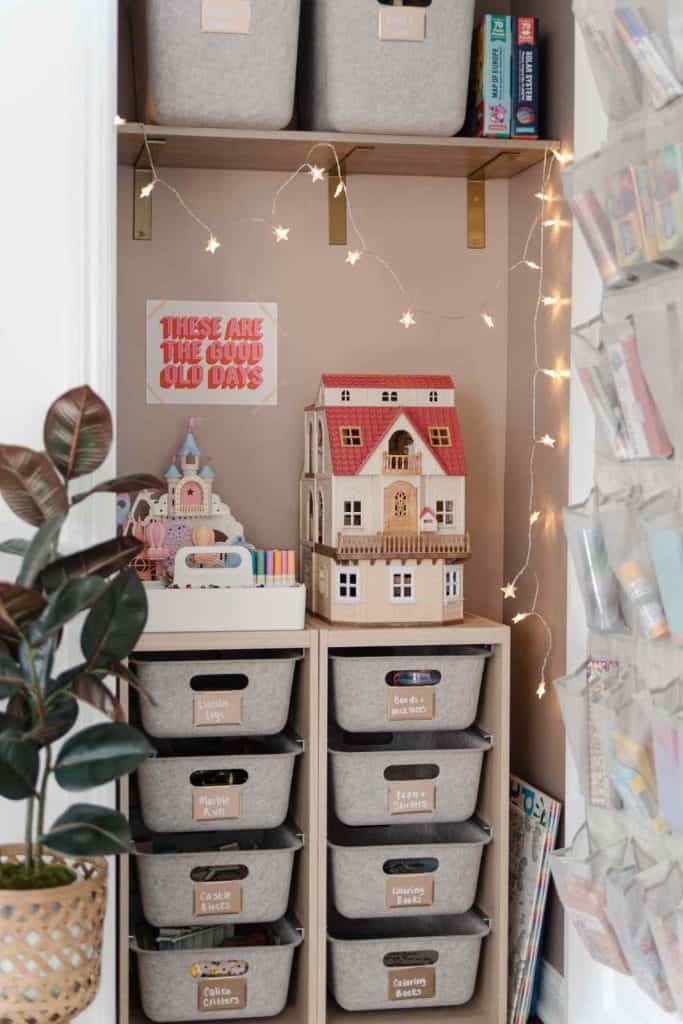
Clear bins or colorful fabric cubes are perfect for grouping smaller items—like socks, hats, pajamas, or underwear. Label them clearly with words or pictures so your child knows where things go.
Why it helps:
- Encourages independence—they can dress themselves and put laundry away.
- Reduces clutter—everything has a “home.”
- Makes quick morning routines possible—even for preschoolers.
✅ For pre-readers, use picture labels or icons so they can understand what belongs where.
3. Over-the-Door Shoe Organizers (for More Than Just Shoes)
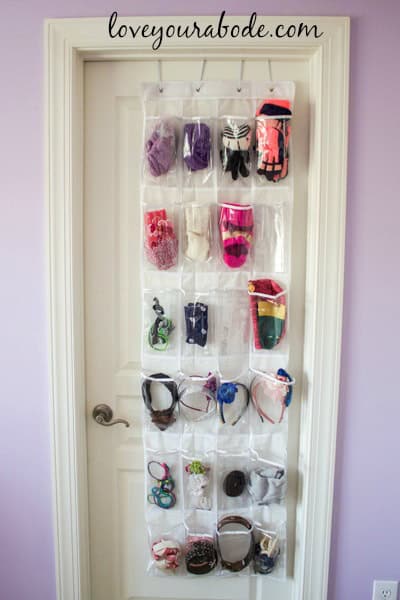
Hang a pocket organizer on the back of the closet door. While it’s made for shoes, you can store hair accessories, socks, small toys, dolls, gloves, or even rolled-up T-shirts.
Why it’s brilliant:
- Vertical storage = space saved.
- Transparent pockets make it easy to see what’s inside.
- Adds 20–24 mini compartments instantly.
4. Clear Drawer Units for Extra Clothes or Supplies
Instead of a bulky dresser, use clear plastic drawers or stackable bins inside the closet. They’re perfect for overflow clothes, craft supplies, or off-season gear.
Why it’s useful:
- You can see what’s inside without opening drawers.
- They fit perfectly in the lower half of most closets.
- Modular designs grow with your child’s needs.
✅ Use this for seasonal storage too—keep swimsuits in winter or snow pants in summer safely tucked away.
5. Plan Outfits Ahead with a “Tomorrow Spot”
Mornings are easier when outfits are ready. Add a hanging hook or a labeled basket to hold the next day’s clothes. Let your child help pick it out the night before.
Why it works:
- Reduces morning stress for both parent and child.
- Helps kids learn routine and decision-making.
- Prevents wardrobe battles before school.
✅ For older kids, you can plan a full weekly outfit system with hanging organizers labeled Mon–Fri.
6. Color-Code the Closet
Arrange clothing by color. It looks nice, but more importantly, it helps your child find items quickly.
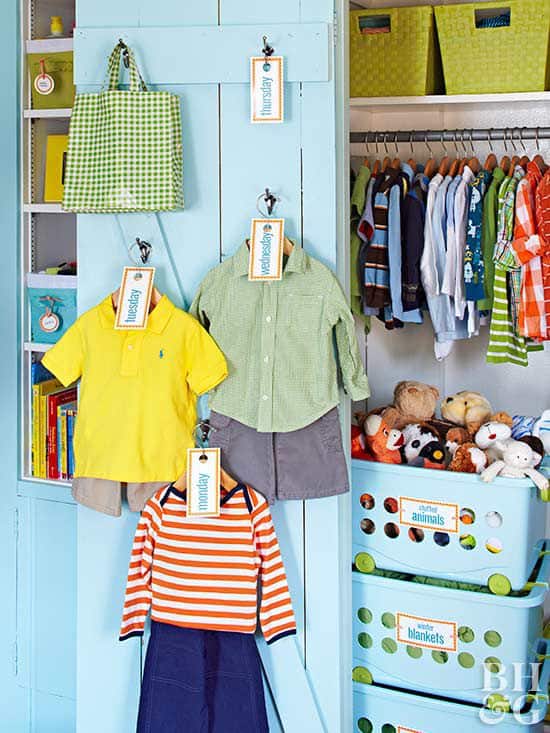
Why this helps:
- Creates visual order and pattern recognition (especially for younger children).
- Makes outfit-picking easier (“All blue shirts are here”).
- Encourages them to keep it tidy—when they know where each color goes.
7. Cube Storage Systems at the Bottom
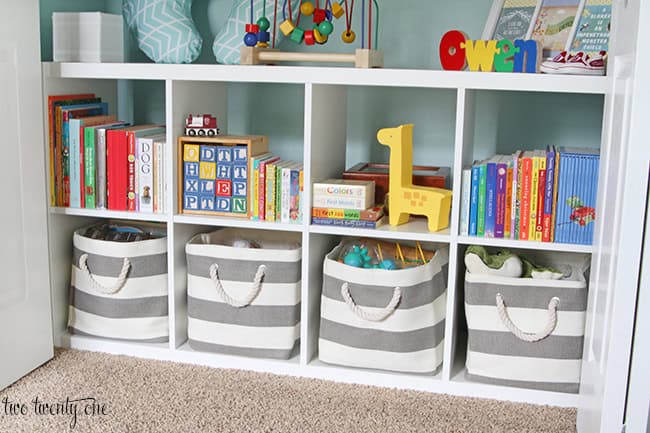
Modular cube shelves (like IKEA’s Kallax) are a game-changer. They fit perfectly under hanging clothes and can hold everything from books and toys to folded shirts and shoes.
Benefits:
- Kid-height—your child can reach things on their own.
- Changeable—use open bins now, add doors or drawers later.
- Looks neat even if it’s packed full.
8. Adjustable Shelving That Grows With Your Child
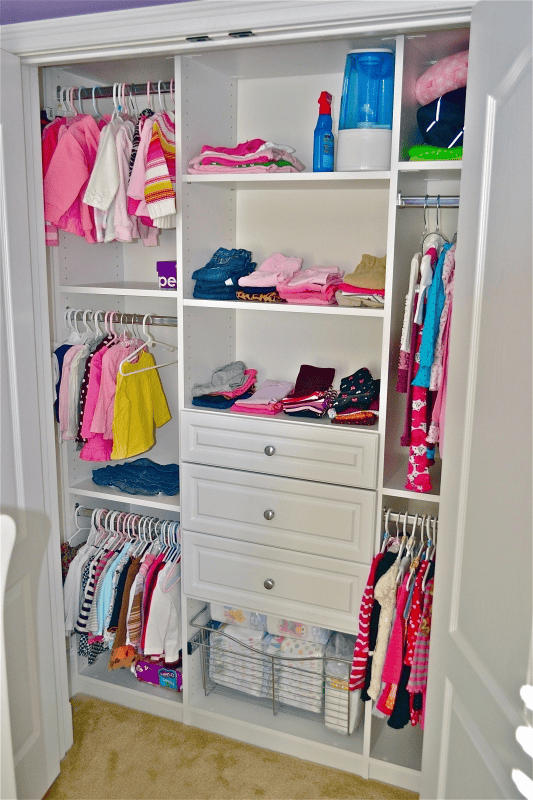
Closets aren’t one-size-fits-all—especially not for kids who outgrow everything every six months. Install adjustable shelving so you can shift things up or down as they grow.
Bonus:
- Easy to switch from baby bins to tween shoe shelves.
- More long-term value than fixed shelf systems.
9. Fabric Hanging Organizers for Folded Clothes
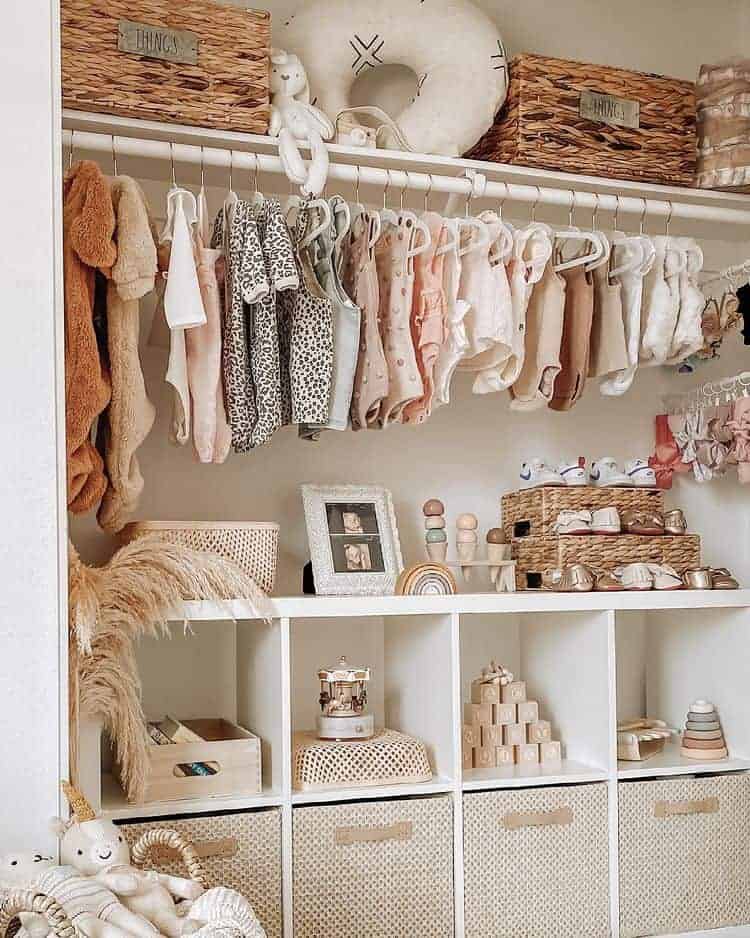
Hang a vertical fabric organizer over the rod—this instantly creates mini shelves for folded clothes, shoes, or themed sections (pajamas, gym day, sports uniforms).
Why it works:
- Makes folded items easier to grab than from deep drawers.
- Each child can have their own “zone” in a shared closet.
- No tools or drilling needed—just hang it and go.
10. Wall Hooks for Coats, Bags & Accessories
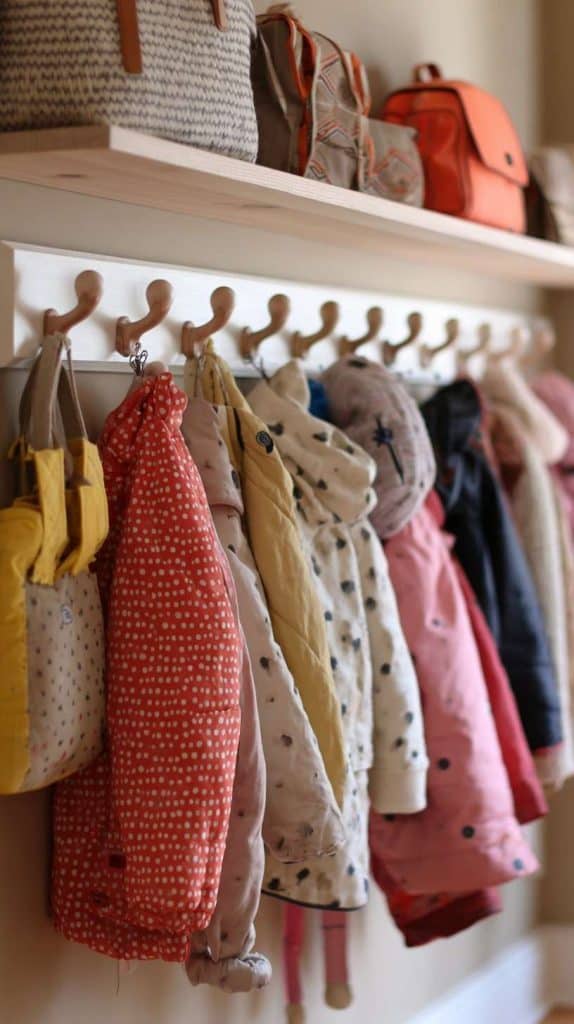
Install wall hooks inside the closet or on side walls for backpacks, hats, dress-up costumes, scarves, or belts.
Why it works:
- Maximizes unused space.
- Encourages kids to hang things up instead of throwing them on the floor.
- Great for kids too young to use hangers.
✅ Use adhesive hooks if you’re renting or want a no-drill solution.
11. Built-in Donation Bin
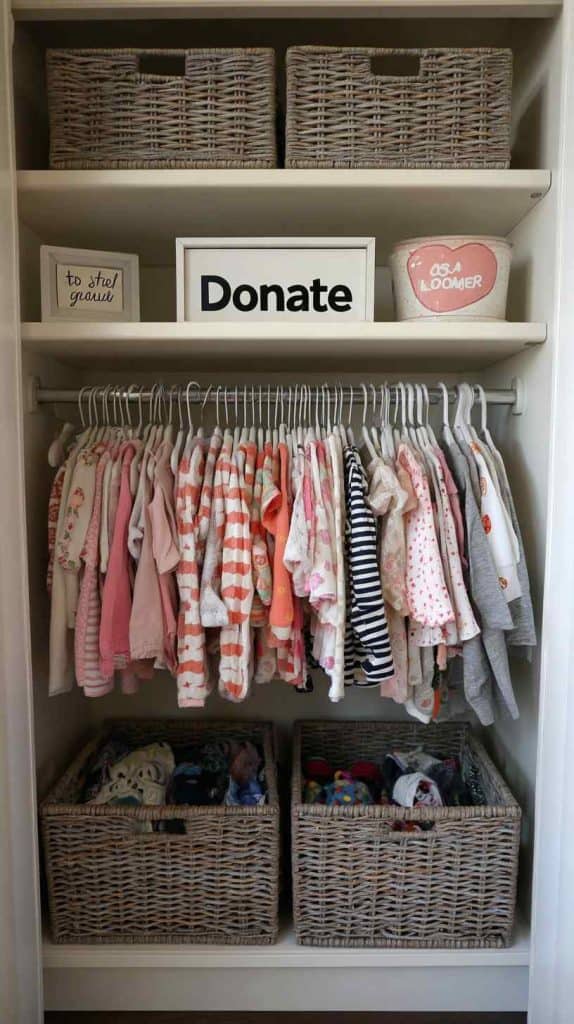
Keep a small basket labeled “Too Small” or “Donate” inside the closet. As soon as your child tries something on that no longer fits, it goes straight in the bin.
Why it matters:
- Keeps the closet from overflowing with unwearable clothes.
- Makes seasonal purging easier—no sorting through the whole closet.
12. Rod Dividers for Categories or Sizes
Rod dividers are helpful especially in baby and toddler closets. You can sort clothes by size (0–3M, 3–6M, 6–12M), type (school, dressy, pajamas), or season.
✅ Easily DIY with cardboard or buy reusable plastic ones you can relabel.
13. Use Pictures for Labels
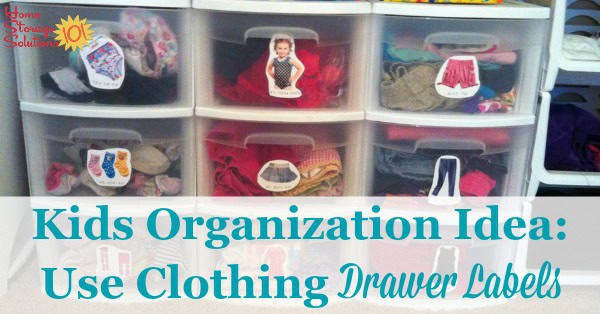
If your child can’t read yet, use pictures to label bins and drawers. Take a photo of socks or download icons online, then tape or laminate them on each container.
✅ This makes organizing fun and empowers kids to help more.
14. Turn It Into a Dress-Up Station
Got a child who loves pretend play? Dedicate part of the closet for their costumes. Install a low rod just for princess dresses, capes, and superhero outfits.
Add:
- A bin for props and accessories
- A mirror on the door
- Hooks for hats and purses
✅ Organization + creativity = win-win!
15. Design a Capsule Wardrobe for Simplicity
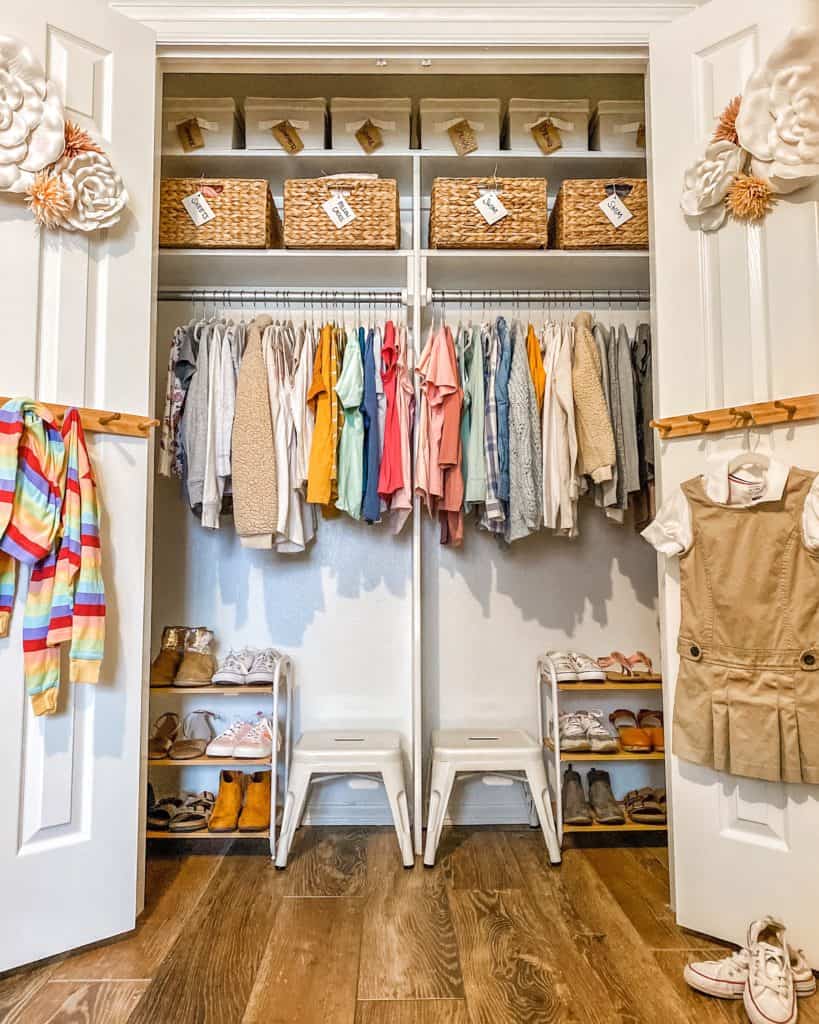
Instead of stuffing the closet with dozens of mismatched pieces, try curating a capsule wardrobe: 5–6 tops, 4–5 bottoms, and a few mix-and-match layers.
Why it’s smart:
- Less laundry.
- Easier to organize.
- Promotes better use of each piece.
✅ Stick to 1–2 color themes so most items go together.
16. Elfa Closet Systems Work So Well for Kids
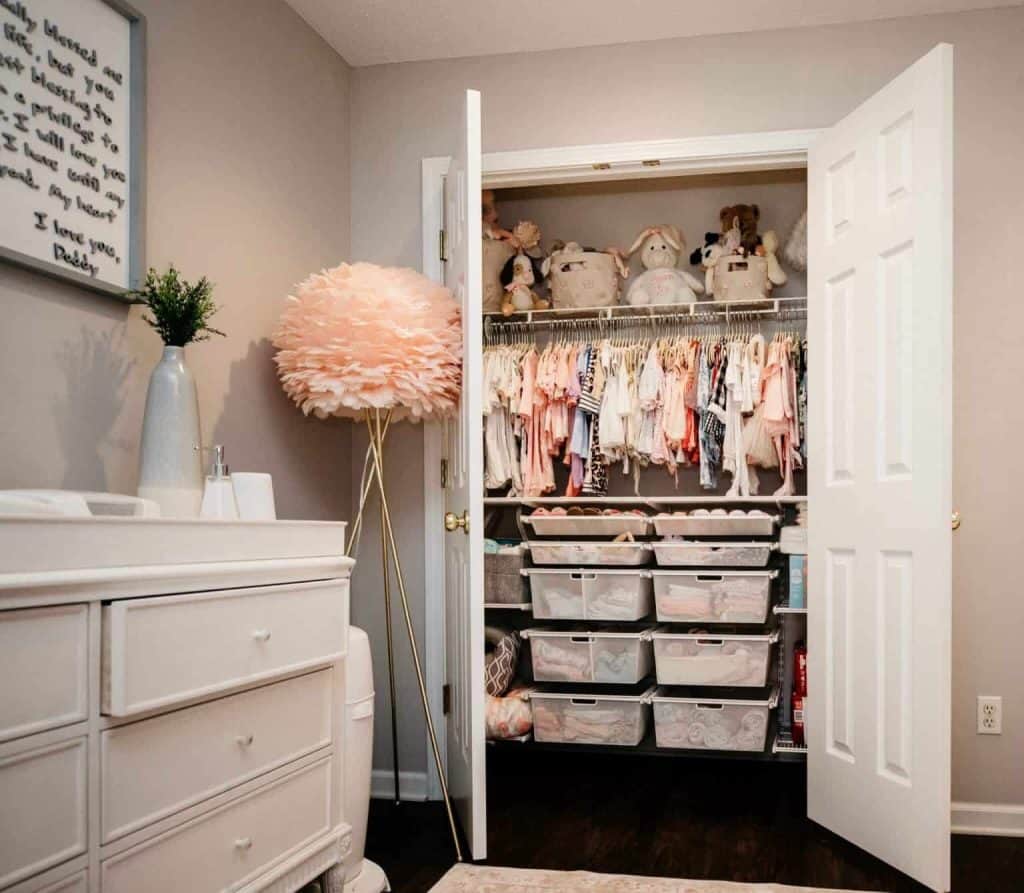
If you’re ready to upgrade beyond bins and baskets, consider investing in an Elfa closet system. It’s one of the most versatile and long-lasting solutions for kids’ closets.
Why it’s ideal:
- Adjustable as kids grow: You can move shelves higher, add drawers, or change the layout as their needs change.
- Maximizes every inch: Great for small closets or awkward spaces.
- Easy to install and reconfigure: No need to commit to one setup forever.
- Kid-friendly accessibility: You can position lower shelves and rods for younger children, promoting independence.
You can start small—with a few shelves and hanging rods—or go all in with drawers, mesh baskets, and built-in shoe racks.
✅ Pro tip: Visit The Container Store during their annual Elfa sale (usually in January or July) for major discounts on full closet kits.
17. Seasonal Swaps in Clear Labeled Bins
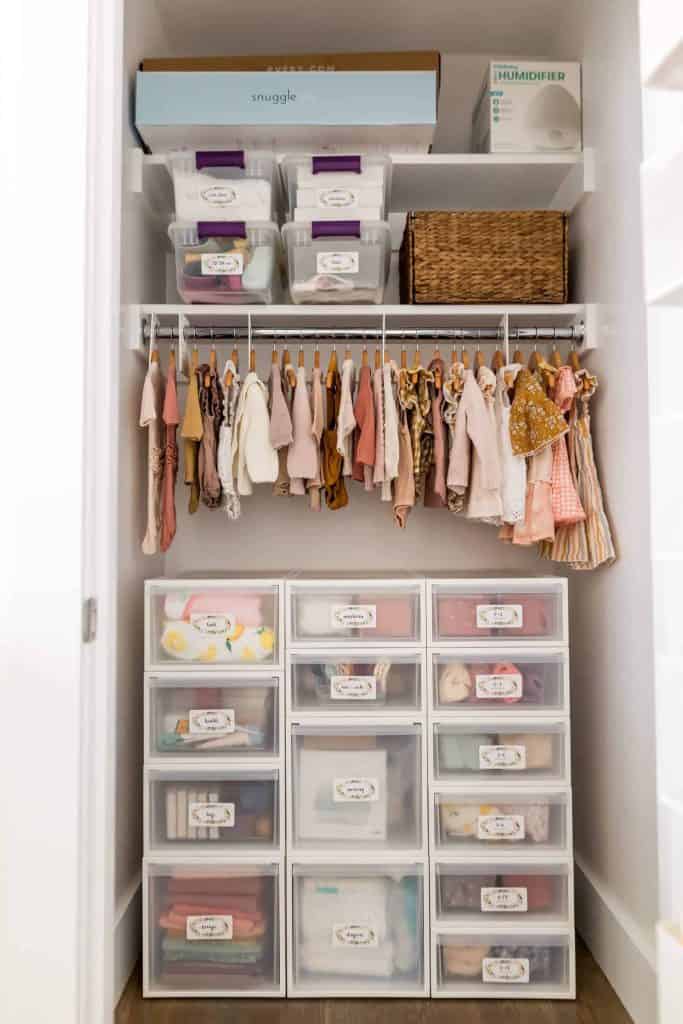
Off-season clothes (swimsuits in winter, snow pants in summer) should live in clear plastic bins with labeled lids. Store these on high closet shelves or under the bed.
✅ Keeps current clothes accessible, and reduces clutter during the season.
18. Dedicated Shelf or Bin for School Uniforms
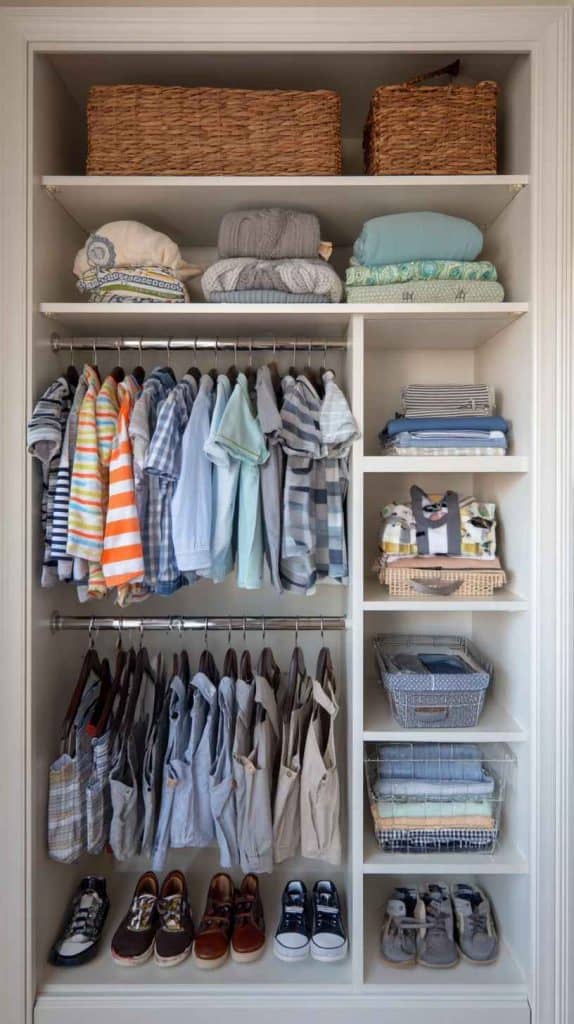
If your child wears a uniform, create a specific zone just for that. One shelf, one drawer, or one labeled bin keeps it all together and avoids the last-minute scramble.
✅ You can also add a hanging organizer labeled by school day if they have different outfits or themes.
19. Create a Rotating Outfit System
For older kids, create an outfit rotation system: hang 5–6 pre-approved outfit combos at the front of the closet and rotate weekly.
Benefits:
- Simplifies decision-making for kids who hate choosing.
- Helps them build responsibility and routine.
20. Keep a Laundry Basket Inside the Closet
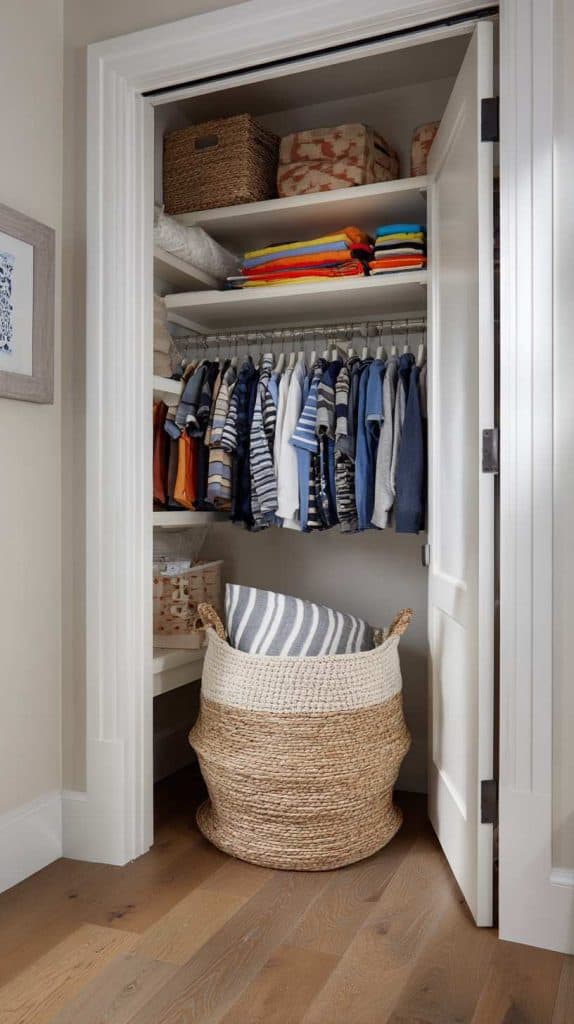
It sounds obvious, but a hamper right where clothes are stored is the easiest way to encourage your child to put dirty items in the right place.
✅ Choose one with handles or a cute design to make it feel fun.
21. Closet Command Center on the Door
Use the inside of the closet door as a functional space:
- Add a dry-erase board for reminders
- Clip-on pockets for socks or coupons
- Weekly planner or school checklist
✅ Especially great for school-aged kids learning to manage routines.

I’m Katerina Lithopoulou, co-creator of DIY Cozy Living. I’ve always loved the little things that make a space feel special — soft textures, warm lighting, thoughtful details. With a background in language and a passion for photography and cozy design, I enjoy turning everyday inspiration into simple ideas people can actually use.
My motto: “Cozy isn’t a trend — it’s a feeling.”

